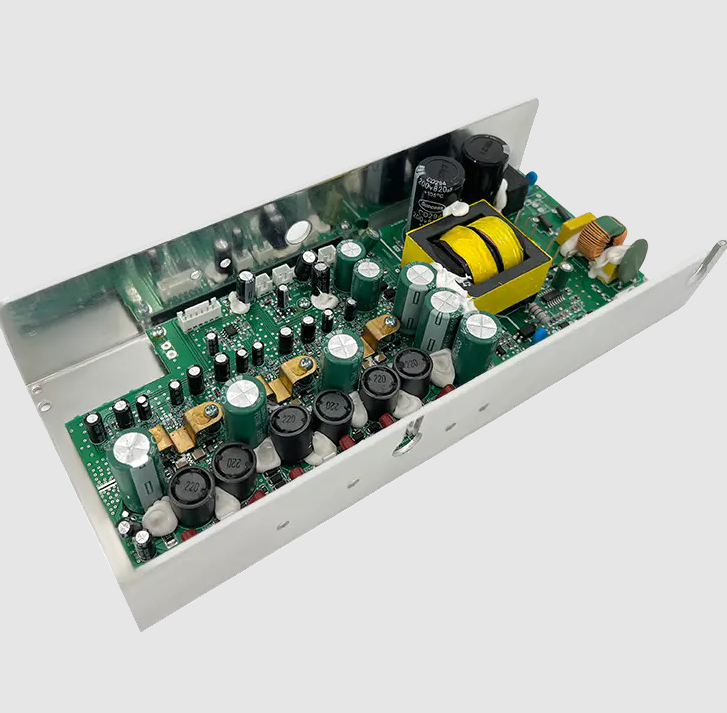A Line Array Power Amplifier Module plays a pivotal role in sound reinforcement systems, particularly in scenarios where consistent and widespread audio distribution is essential. Its primary function is to take low-level audio signals, typically sourced from a mixing console or audio input, and amplify them to a level suitable for powering the loudspeakers within a line array system. Delving deeper, here's an in-depth exploration of the significance and functions of a Line Array Power Amplifier Module in the realm of sound reinforcement:
1. Signal Amplification: The core purpose of the Line Array Power Amplifier Module is straightforward yet critical. It amplifies audio signals, taking them from their original low levels to a point where they can effectively drive the loudspeakers. This amplification is vital for ensuring that the sound is delivered clearly and comprehensively throughout the designated area.
2. Signal Processing: Many Line Array Power Amplifier Modules incorporate built-in signal processing capabilities. This encompasses features like equalization (EQ), which enables sound engineers to fine-tune the audio by adjusting frequencies to align with the acoustic characteristics of the venue. Additionally, these modules often include crossover networks, dividing the audio signal into different frequency bands and directing each band to the appropriate components of the loudspeakers within the line array.
3. Efficient Power Distribution: Line arrays are constructed from multiple loudspeakers that are vertically arranged to provide uniform sound dispersion. The Line Array Power Amplifier Module is tasked with efficiently distributing power to each individual loudspeaker while maintaining precise phase relationships and timing between them. This is essential for ensuring coherent and even audio coverage.
4. System Protection: To preserve the integrity of both the loudspeakers and the amplifier module, protection circuits are commonly integrated. These circuits can detect issues such as overheating, short circuits, and overloading. When anomalies are detected, the module takes corrective actions to prevent damage or system failure. This protection is a vital safeguard for the reliability and longevity of the entire sound reinforcement system.
5. Network Connectivity: In the modern era of digital sound reinforcement, Line Array Power Amplifier Modules often feature network connectivity. This facilitates remote monitoring and control, allowing sound engineers to make real-time adjustments, monitor system performance, and swiftly address any issues that may arise during an event.
6. Line Array Optimization: These amplifier modules are meticulously engineered to meet the specific requirements of line array configurations. They can adeptly manage the intricate phase relationships between the multiple loudspeakers in the array and are equipped to deliver the requisite power and signal processing to ensure consistent and balanced sound coverage, particularly in sizable venues.
7. Multi-Channel Capabilities: Depending on the specific model, Line Array Power Amplifier Modules may boast multiple channels. This versatility empowers sound engineers to exert precise control and optimization over distinct sections or groups of loudspeakers within the line array. This is particularly advantageous in complex sound reinforcement setups.
In summation, a Line Array Power Amplifier Module is an indispensable component in sound reinforcement, especially in contexts where vast audio coverage is indispensable. Its core function is to amplify and distribute audio signals, often enriched with signal processing and protection features. These modules grant sound engineers the capacity to achieve optimal sound quality and comprehensive coverage within line array configurations, cementing their status as indispensable tools for high-impact audio systems.

 English
English 中文简体
中文简体










